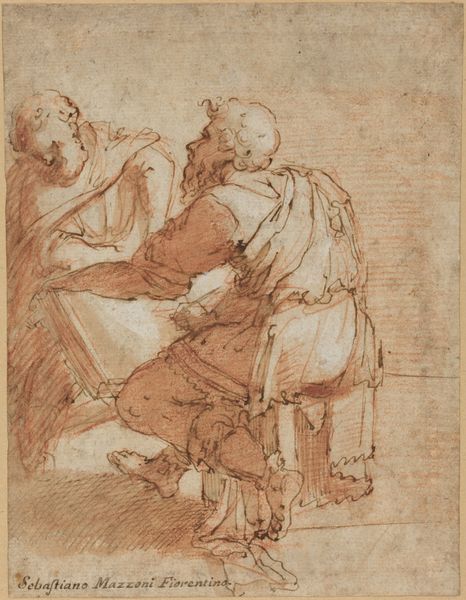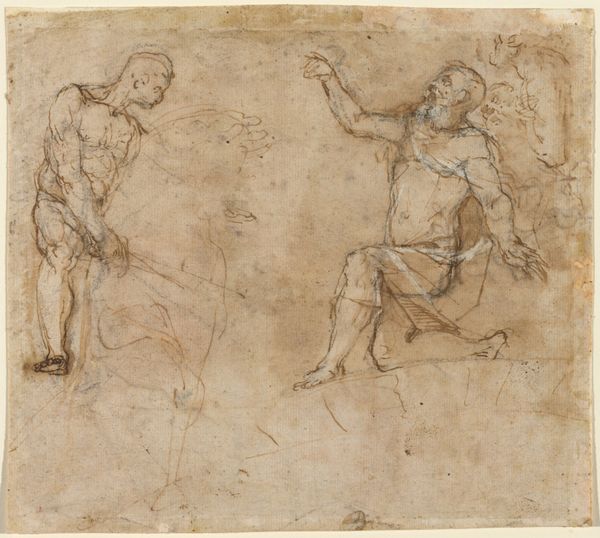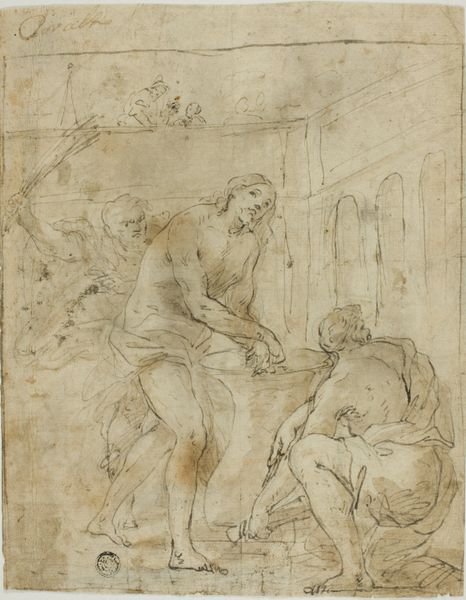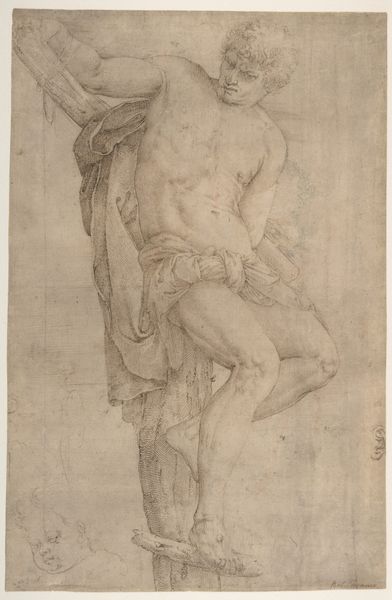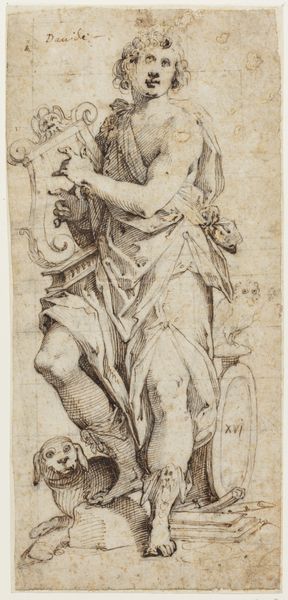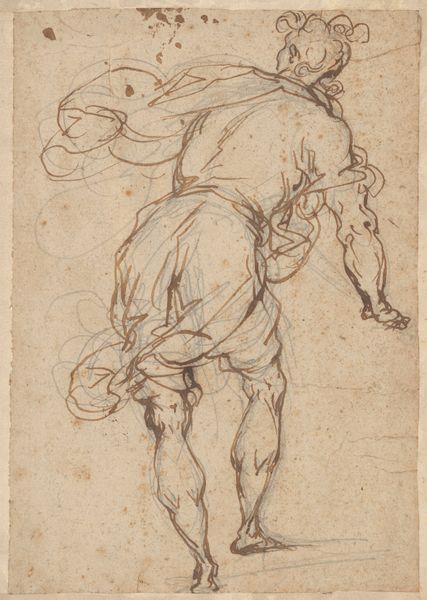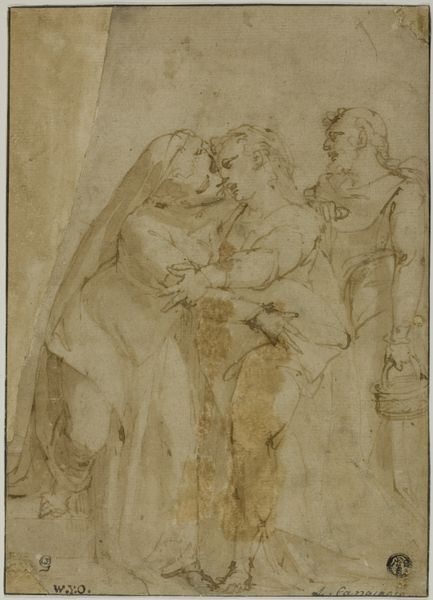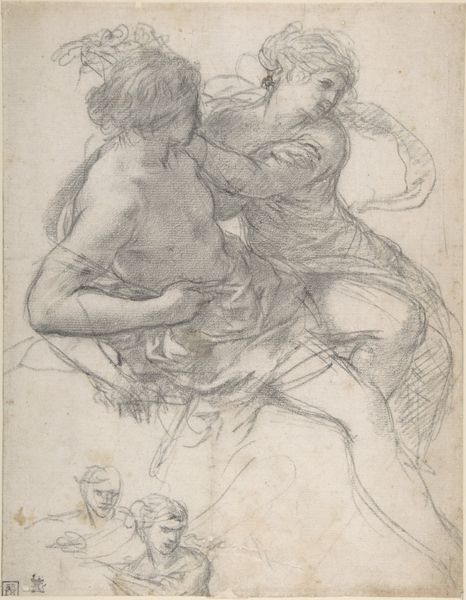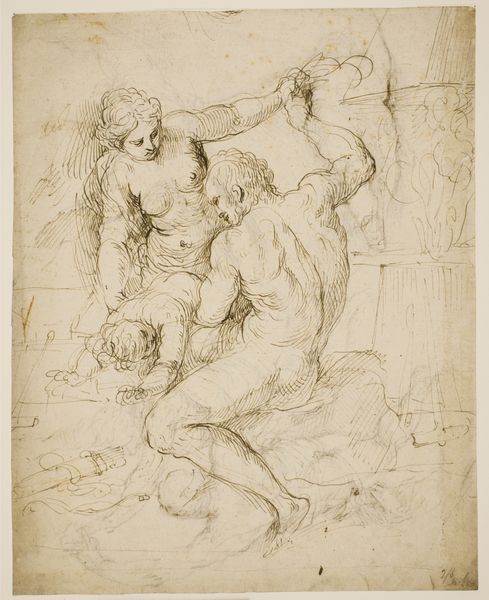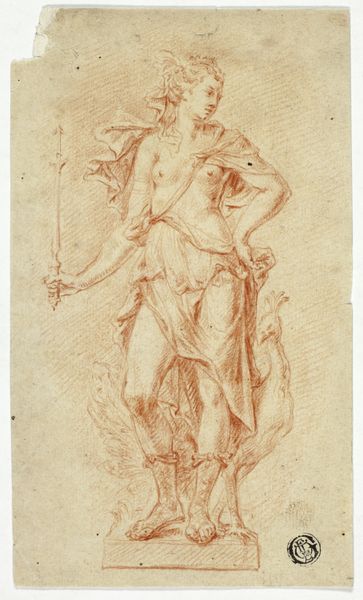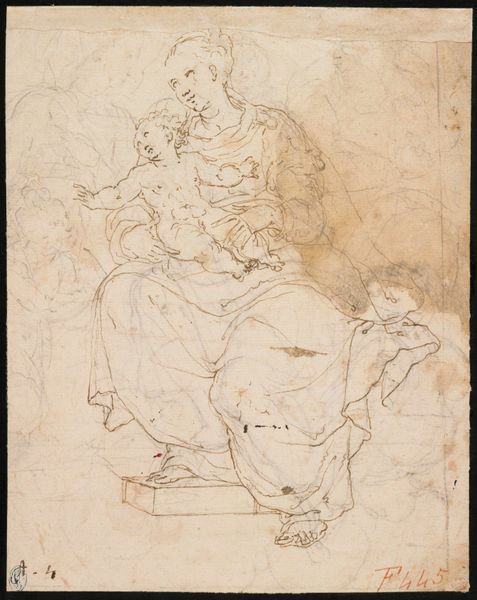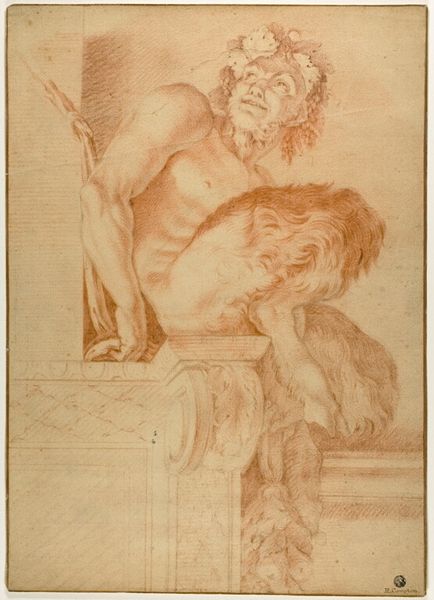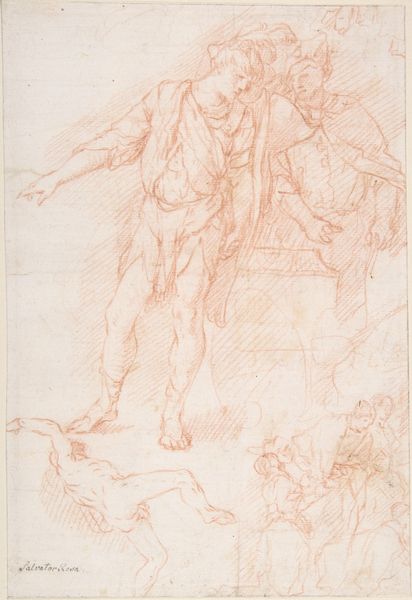
Der heilige Nabor (Felix_) und der jugendliche Johannes der Täufer c. 1570 - 1575
0:00
0:00
drawing, ink, chalk, charcoal
#
drawing
#
charcoal drawing
#
mannerism
#
figuration
#
11_renaissance
#
oil painting
#
ink
#
chalk
#
charcoal
Copyright: Public Domain
Editor: This drawing, "Der heilige Nabor (Felix_) und der jugendliche Johannes der T\u00e4ufer" by Orazio Samacchini, from around 1570-1575, is captivating. The figures seem almost sketched out, preliminary. What stands out to you about it? Curator: The visible grid underneath reveals this as a working drawing, a preparation. Consider the materiality of chalk, ink and charcoal. These are relatively inexpensive materials, readily available in an artist's workshop. This points to its purpose: a study, likely for a larger, more permanent, commission. The level of finish suggests this wasn’t intended as a display piece, but a practical tool. Editor: A tool? So you're saying the artistic value wasn't the main focus? Curator: Exactly! Let’s think about labor. Assistants likely helped prepare the paper, grind pigments for the inks, and potentially even laid out the grid. These collaborative practices challenge the romantic idea of the solitary genius. How do these materials affect our perception, knowing its means of production? Editor: It makes me appreciate the skill, and almost the infrastructure that was necessary to produce even a 'simple' sketch like this. It’s interesting to think about what it was like to make this type of art during the Renaissance. What sort of consumers or patrons were supporting these kind of works? Curator: Well, we know Samacchini worked on large decorative cycles for churches and private patrons. This drawing likely relates to a larger, commissioned piece, demonstrating a hierarchical relationship between the artist and their sponsors who controlled demand. The drawing represents an essential, but disposable stage, valued instrumentally. Editor: I never considered the artist's drawing this way. Thank you for the insightful observations on materials, workshop production and the function of a 'disposable stage'. Curator: Looking at the artistic labour beyond artistic genius always enriches the view of an artwork!
Comments
No comments
Be the first to comment and join the conversation on the ultimate creative platform.
